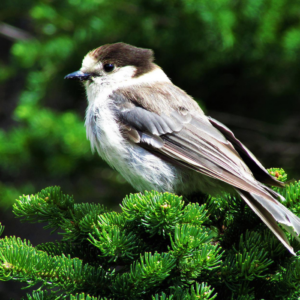5 Weird Facts about Blue Jays
As the weather gets cooler, you may notice some birds starting to head south. However, the Blue Jay is one feathered friend we will see year round across Canada. Here are some facts about the Blue Jay you may not know – some of which you may find downright strange!
Blue Jay Description
- Common name: Blue Jay
- Scientific name: Cyanocitta cristata
- Habitat: forests edges
- Lifespan: the eldest wild, banded Blue Jay was 26 years old.
- Size: 25-30 cm long; 70-100 g
- Description: The Blue Jay is a large blue songbird with a perky crest. Its underside is white, and its back is blue, white and black.
Fact 1 – Blue Jays rub ants on their feathers.
Yes, you read that correctly. The jays rub ants on their feathers, draining the ants of their formic acid before they gobble them up. This is known as “anting.”
Over the years, several theories have been proposed to explain this bizarre behaviour. One theory hypothesized the excreted acid served as a safeguard against parasites and bacteria, though testing the acid on bacteria cultures showed this to be unlikely. The most probable reason is simple: the ants taste better without the acid. Ornithologists tested this theory by exposing jays to ants with and without formic acid – the ants without acid were eaten immediately while the ones with it were treated to the rubbing ceremony.
Fact 2 – The pigment found in Blue Jay feathers is actually brown.
Melanin, the same pigment found in human hair and skin, is a brown pigment – and it is the pigment found in Blue Jay feathers.
Why, then, do they appear blue?
Bird colouration is produced in a variety of ways, of which pigmentation is just one. The blue appearance of many blue birds is due to refraction – a light scattering phenomenon. The barb structure of Blue Jay feathers is such that, when light hits them, the blue light is refracted while the other wavelength of visible light are absorbed by the melanin, making them look blue.
If you come across a Blue Jay feather, try backlighting it. Without direct light, the blue is no longer reflected and the feather will look brown.
Fact 3 – Blue Jays mimic hawks.
Blue Jays can make a variety of sounds and it is common to hear them mimicking hawks, especially the Red-shouldered Hawk. Ornithologists suggest they do this for one of two reasons, or perhaps both. The first theory is the mimicry serves as a warning to other jays about any lurking hawks. The second is that jays are trying to fool other species into thinking there are hawks nearby.
Fact 4 – Blue Jays collect paint chips.
Blue Jays have been known to chip at and hoard light-coloured paint, probably to stockpile a source of calcium for the spring. If Blue Jays are chipping away at the paint on your house, try providing an alternate source of calcium like crushed egg shells – this usually stops the unwanted behaviour.
Fact 5 – Blue Jays are noisier in the fall than in the spring or summer.
Many notice that Blue Jays, who are fairly quiet during the spring and summer, are noisy little neighbours during the fall. In spring and early summer, when they are nesting, jays tend to be more secretive. Come fall, when they are scavenging for food and hawks are more present, they communicate a variety of information and warnings through their calls.



